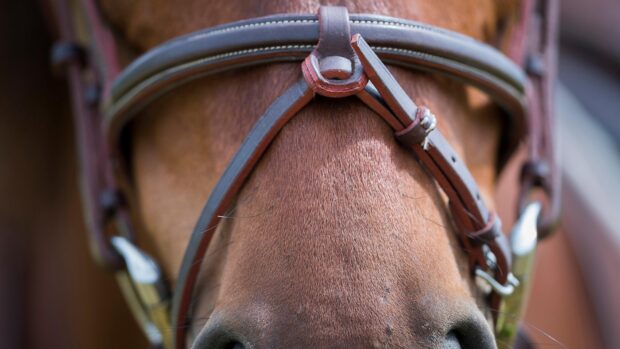Many racehorses can be seen sporting rubber Australian nosebands, which buckle to the crownpiece of the bridle, run down the centre of the face and then split, encircling the mouthpiece of the bit on each side, just inside the rings.
“All ourhorses wear Australian nosebands, in conjunction with a sheepskin noseband,” explains Bridget Nicholls.
“It’s a formula we hit on two seasons ago with James The First, who we’d had a few problems with. He then went on to win three or four races,and it has also worked for our other runners.
“The rubber noseband keeps the bit a little higher in the mouth and stops a horse getting its tongue over,” Bridget explains, “and the rubber rings act as pads, preventing the bit being pulled out ofposition if a horse hangs to one side. We add a sheepskin noseband because we think it helps to keep a horse’s head down so that he’s easier to control, particularly on the approach to a fence or hurdle.”
The Australian noseband is designed for use with snaffle bits and can also deter a horse from “catching hold” of the mouthpiece, which should not press on or wrinkle the horse’s lips when adjusted correctly. Although it is widely used on the racecourse, the noseband can also be seen on event horses during the cross-country phase.


